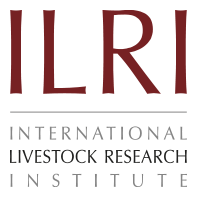Taoyuan
Ecological conditions: Taoyuan Black pig is one of the Black pigs in the west of Hunan province. It originated from the riverside of Yuan River, mainly from the central production area of Taoyuan county, which are mostly mountainous areas with an altitude of over 1000 metres. Due to the terrain, little land is available for cultivation. Pigs are raised extensively, herded during day and kept in sheds for the night.
The Taoyuan Black Pig was developed through long term selection in the given environment. According to classification of Pig Breeds in China, Taoyuan Black Pig was classified as Central China type (Zhang et al, 1986).
Appearance characteristics: Taoyuan pigs have middle-size heads of two types; long and short. They have deep and shadow winkle on the forehead just like Chinese word"B0CB94or "BDE994 and drooped ears. Taoyuan pigs have a slightly long mid part of the body, the back, abdomen and waist are wide and flat, the rump is a little tilted and they have strong limbs. The back hair usually is black but sometimes there is a little white scattered in the end of the body. The number of teats ordinarily is about 7 pairs.
Production Performance: The Taoyuan Black pigs attain sexual maturity at an early age. The boars start mating at the age of 4-6 months when their body weight is about 25kg. Most of the sows attain oestrus at the age of 90-120 days and are ready to be mated by the second or third oestrus when the average body weight is about 30kg. The number of litter in first parity is about 7, and can reach over 12 piglets in later parities.
Utilization style:
Crossbreeding: Using the Taoyuan Black pig as a dam to hybridze with Yorkshire and Landrace boar, resulted in first crossbred offspring with improved body weight at weaning. Yorkshire x Taoyuan Black crosses weighed 32.3% heavier than the Taoyuan Black, while Landrace x Taoyuan Black crosses were 56.18% heavier at weaning. Fattening performance measured as individual daily weight improved by 10.25% and 1.21% in Yorkshire x Taoyuan Black and Landrace x Taoyuan Black first crossbred offspring, respectively.
Evaluation of the genetic diversity: Tao et al(1992) studied the genetic relationships of the local pig breeds of Hunan province with the electrophoresis of improved starch gel on the serum Prealbumin (Pa), Postalbumin (Po), Transferrin (Tf), Ceruloplasmin (Cp), Hpx and Am. Their results showed all of these loci were polymorphic in the Taoyuan breed which clustered with the Ningxiang, Longtan and Pushi breeds into a branch.
Yang et al (2003) studied the genetic variation of Taoyuan breed with a set of 27 microsatellite markers recommended by the Food and Agriculture Organization of the United Nations and International Society of Animal Genetics (FAO-ISGA), all of these markers were polymorphic, the smallest and largest number alleles of one locus were eight (SW632) and the twenty three (S0005), the average of observed and effective alleles were 13.42 and 7.38, while the observed and expected heterozygosity were 0.856 and 0.691, respectively. The cluster analyses results showed the Taoyuan clustered with breeds of the Southwest China type and Central China type, which was consistent with the phenotypic and geographical classification.
Reference
1. Tao J. and Y. Zhou, Biochemical genetic research on the blood relationship among native pig breeds in Hunan, Acta Veterinaria et Zootechnica Sinica, 1992, 23(1) 13-21.
2. Yang S.L, Z.G. Wang and B. Liu, Genetic variation and relationship of eighteen Chinese indigenous pig breeds, Genet. Sel. Evol. 2003, 35: 657-671.
3. Zhang Z.G., B.T. Li, X. H. Chen, Pig Breeds in China. Shanghai Scientific and Technical Publishers. 1986 pp81-84.





